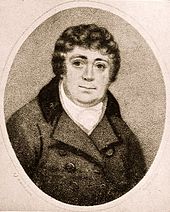
The Beggar's Opera is a ballad opera in three acts written in 1728 by John Gay with music arranged by Johann Christoph Pepusch. It is one of the watershed plays in Augustan drama and is the only example of the once thriving genre of satirical ballad opera to remain popular today. Ballad operas were satiric musical plays that used some of the conventions of opera, but without recitative. The lyrics of the airs in the piece are set to popular broadsheet ballads, opera arias, church hymns and folk tunes of the time.

Richard Turpin was an English highwayman whose exploits were romanticised following his execution in York for horse theft. Turpin may have followed his father's trade as a butcher early in his life but, by the early 1730s, he had joined a gang of deer thieves and, later, became a poacher, burglar, horse thief and killer. He is also known for a fictional 200-mile (320 km) overnight ride from London to York on his horse Black Bess, a story that was made famous by the Victorian novelist William Harrison Ainsworth almost 100 years after Turpin's death.

Claude Du Vall (or Duval) (1643 – 21 January 1670) was a French highwayman in Restoration England. He came from a family of decayed nobility, and worked in the service of exiled royalists who returned to England under King Charles II. Little else is known of his history. According to popular legend, he abhorred violence, showing courtesy to his victims and chivalry to their womenfolk, thus spawning the myth of the romantic highwayman, as taken up by many novelists and playwrights.

A bowling green is a finely laid, close-mown and rolled stretch of turf for playing the game of bowls.

John Gwynn was an English architect and civil engineer, who became one of the founder members of the Royal Academy in 1768. He advocated greater control over planning in London, for which he produced detailed suggestions. His buildings include Magdalen Bridge and the Covered Market in Oxford, and several bridges over the River Severn.
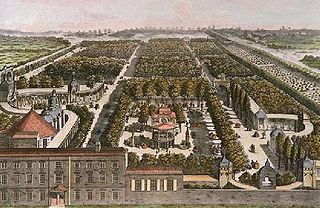
Vauxhall Gardens is a public park in Kennington in the London Borough of Lambeth, England, on the south bank of the River Thames.

Beacon Park is a public park in the centre of the city of Lichfield, Staffordshire, in the United Kingdom. The park was created in 1859 when the Museum Gardens were laid out adjacent to the newly built Free Museum and Library. The park has since been extended in stages and now forms 69 acres (28 ha) of open parkland in the city centre. The park is in the northwest of the city centre and to the west of the Cathedral Close across the road from the Garden of Remembrance.

A pleasure garden is a park or garden that is open to the public for recreation and entertainment. Pleasure gardens differ from other public gardens by serving as venues for entertainment, variously featuring such attractions as concert halls, bandstands, amusement rides, zoos, and menageries.

The Beggar's Opera is a 1953 British historical musical film, a Technicolor adaptation of John Gay's 1728 ballad opera of the same name. The film, directed by Peter Brook in his feature film debut, stars Laurence Olivier, Hugh Griffith, Dorothy Tutin, Stanley Holloway, Daphne Anderson and Athene Seyler. Olivier and Holloway provide their own singing, but Tutin and others were dubbed.

John Cheere (1709–1787) was an English sculptor, born in London. The younger brother of the sculptor Sir Henry Cheere, he was originally apprenticed as a haberdasher from 1725 to 1732.
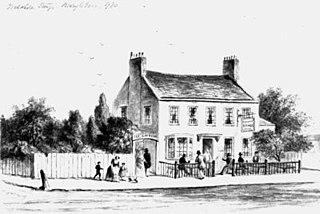
The Yorkshire Stingo was a public house in Marylebone in the 18th to mid-20th century. Its name came about because it was customary for Yorkshiremen in London to gather at the pub and its adjoining pleasure gardens on the first three days of May each year. In May 1808 it was reported that over 20,000 people gathered there, drinking strong ale, playing football and other 'rustic Yorkshire sports'. The Stingo part of its name comes from a fashionable slang word of the 18th century for strong or old ale. The term is possibly derived from the sharp, or "stinging" flavour of a well-matured beer.
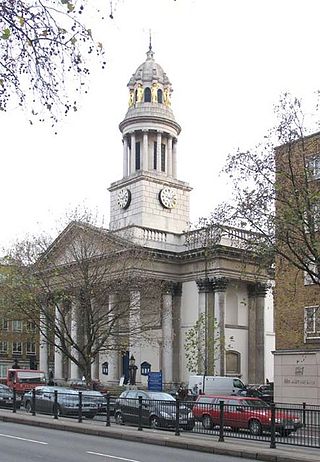
St Marylebone Parish Church is an Anglican church on the Marylebone Road in London. It was built to the designs of Thomas Hardwick in 1813–17. The present site is the third used by the parish for its church. The first was further south, near Oxford Street. The church there was demolished in 1400 and a new one erected further north. This was completely rebuilt in 1740–42, and converted into a chapel-of-ease when Hardwick's church was constructed. The Marylebone area takes its name from the church. Located behind the church is St Marylebone School, a Church of England school for girls.

Marylebone High Street is a shopping street in London, running sub-parallel to Baker Street and terminating at its northern end at the junction with Marylebone Road. Given its secluded location, the street has been described as "the hidden wonder of the West End" and it was voted "best street in London" in 2002 by listeners of BBC Radio 4, winning praise for its being "a haven in the middle of the frantic city".

The Vauxhall Gardens, was a pleasure garden and theater. It was named for the Vauxhall Gardens of London. Though the venue passed through a long list of owners, and suffered buyouts, closings, relocations, and re-openings, it lasted until the mid-19th century.

Springfield Park is a park in Upper Clapton in the London Borough of Hackney.

Thomas Lowe was an English tenor and actor. He appeared at the Theatre Royal, Drury Lane and at Covent Garden, and frequently performed in London's pleasure gardens. He was particularly associated with the works of Thomas Arne and George Frideric Handel.
Thomas Snelling was an English numismatist.
Thomas Francklin was an English academic, clergyman, writer and dramatist
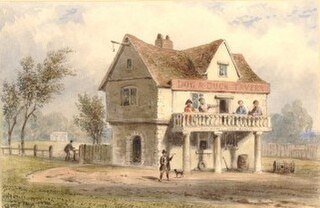
The Dog and Duck was a tavern built upon St George's Fields in London in the 17th century. It was named after the sport of duck-baiting, that took place in adjacent wetland. In the 18th century its gardens were used as a spa but, by the 1770s, with spas no longer fashionable, it declined into a rowdy location for concerts. The magistrates refused to renew its licence, despite protracted legal disputes, and it closed in 1799. The building was then used as a School for the Indigent Blind and demolished in 1812, when the new Bethlem Hospital was built upon the site. That building is now used by the Imperial War Museum.
Revd John Trusler (1735–1820) was an eccentric English divine, literary compiler, and medical empiric.

